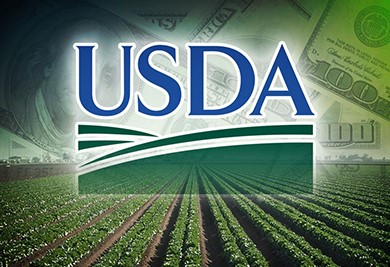U.S. Department of Agriculture
Signup for U.S. Department of Agriculture’s (USDA) Quality Loss Adjustment (QLA) Program is now open. Funded by the Further Consolidated Appropriations Act of 2020, this new program provides assistance to producers who suffered eligible crop quality losses due to natural disasters occurring in 2018 and 2019.
Applications close March 5.
Eligible Crops
Eligible crops include those for which
federal crop insurance or
Noninsured Crop Disaster Assistance Program (NAP) coverage is available, except for grazed crops and value loss crops, such as honey, maple sap, aquaculture, floriculture, mushrooms, ginseng root, ornamental nursery, Christmas trees, and turfgrass sod.
Additionally, crops that were sold or fed to livestock or that are in storage may be eligible; however, crops that were destroyed before harvest are not eligible. Crop quality losses occurring after harvest, due to deterioration in storage, or that could have been mitigated, are also not eligible.
Assistance is based on a producer’s harvested affected production of an eligible crop, which must have had at least a 5% quality loss reflected through a quality discount; or for forage crops, a nutrient loss, such as total digestible nutrients.

Qualifying Disaster Events
Losses must have been a result of a qualifying disaster event (hurricane, excessive moisture, flood, qualifying drought, tornado, typhoon, volcanic activity, snowstorm, or wildfire) or related condition that occurred in calendar years 2018 and/or 2019.
Assistance is available for eligible producers in counties that received a qualifying Presidential Emergency Disaster Declaration or Secretarial Disaster Designation because of one or more of the qualifying disaster events or related conditions.
Lists of counties with Presidential Emergency Disaster Declarations and Secretarial Disaster Designations for all qualifying disaster events for 2018 and 2019 are available
here. For drought, producers are eligible for QLA if the loss occurred in an area within a county rated by the
U.S. Drought Monitor as having a D3 (extreme drought) or higher intensity level during 2018 or 2019.
Click here to see more...